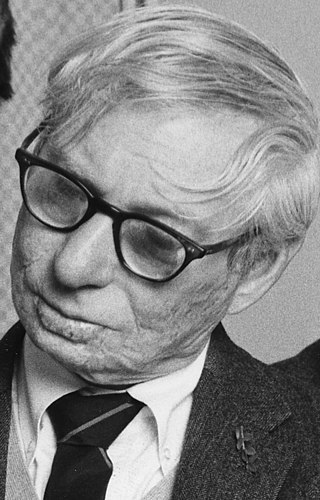Related Research Articles

Italo Calvino was an Italian writer and journalist. His best-known works include the Our Ancestors trilogy (1952–1959), the Cosmicomics collection of short stories (1965), and the novels Invisible Cities (1972) and If on a winter's night a traveler (1979).

Louis Isadore Kahn was an Estonian-born American architect based in Philadelphia. After working in various capacities for several firms in Philadelphia, he founded his own atelier in 1935. While continuing his private practice, he served as a design critic and professor of architecture at Yale School of Architecture from 1947 to 1957. From 1957 until his death, he was a professor of architecture at the School of Design at the University of Pennsylvania.

Space syntax is a set of theories and techniques for the analysis of spatial configurations. It was conceived by Bill Hillier, Julienne Hanson, and colleagues at The Bartlett, University College London in the late 1970s to early 1980s to develop insights into the mutually constructive relation between society and space. As space syntax has evolved, certain measures have been found to correlate with human spatial behavior, and space syntax has thus come to be used to forecast likely effects of architectural and urban space on users.

Originating in ancient India, Vastu Shastra is a traditional Hindu system of architecture based on ancient texts that describe principles of design, layout, measurements, ground preparation, space arrangement, and spatial geometry. The designs aim to integrate architecture with nature, the relative functions of various parts of the structure, and ancient beliefs utilising geometric patterns (yantra), symmetry, and directional alignments.

Charles Mark Correa was an Indian architect and urban planner. Credited with the creation of modern architecture in post-Independent India, he was celebrated for his sensitivity to the needs of the urban poor and for his use of traditional methods and materials.
Marjetica Potrč is an artist and architect based in Ljubljana, Slovenia. Potrč's interdisciplinary practice includes on-site projects, research, architectural case studies, and drawings. Her work documents and interprets contemporary architectural practices and the ways people live together. She is especially interested in social architecture and how communities and governments can work together to make stronger, more resilient cities. In later projects, she has also focused on the relationship between human society and nature, and advocated for the rights of nature.

A Hindu temple, also known as Mandir, Devasthanam, Pura, or Koil, is a sacred place where Hindus worship and show their devotion to deities through worship, sacrifice, and prayers. It is considered the house of the god to whom it is dedicated. Hindu temple architecture, which makes extensive use of squares and circles, has its roots in Vedic traditions, which also influence the temples' construction and symbolism. Through astronomical numbers and particular alignments connected to the temple's location and the relationship between the deity and the worshipper, the temple's design also illustrates the idea of recursion and the equivalency of the macrocosm and the microcosm. A temple incorporates all elements of the Hindu cosmos—presenting the good, the evil and the human, as well as the elements of the Hindu sense of cyclic time and the essence of life—symbolically presenting dharma, artha, kama, moksha, and karma.

Achyut Purushottam Kanvinde was an Indian architect who worked in functionalist approaches with elements of Brutalist architecture. He received the Padma Shri in 1974.
The Danteum is an unbuilt monument proposed by a scholar of Dante, approved by the Benito Mussolini's Fascist government, designed by the modernist architect Giuseppe Terragni. However, in the end about all that remains now are some sketches on paper, scraps of an architectural model of the project and pieces of a project report (Relazione), written by Terragni.

Keller Easterling is an American architect, urbanist, writer, and professor. She is Enid Storm Dwyer Professor and Director of the MED Program at Yale University.
Spatial intelligence is an area in the theory of multiple intelligences that deals with spatial judgment and the ability to visualize with the mind's eye. It is defined by Howard Gardner as a human computational capacity that provides the ability or mental skill to solve spatial problems of navigation, visualization of objects from different angles and space, faces or scenes recognition, or to notice fine details. Gardner further explains that Spatial Intelligence could be more effective to solve problems in areas related to realistic, thing-oriented, and investigative occupations. This capability is a brain skill that is also found in people with visual impairment. As researched by Gardner, a blind person can recognize shapes in a non-visual way. The spatial reasoning of the blind person allows them to translate tactile sensations into mental calculations of length and visualizations of form.

The RMIT Design Hub is a research, archive, exhibition, and studio space of the Royal Melbourne Institute of Technology in Melbourne, Australia located on the historic Carlton & United Breweries site.

Khaleda Ekram was a Bangladeshi architect, professor, researcher, and academic. She served as the 12th vice-chancellor of Bangladesh University of Engineering and Technology (BUET). She was the former dean of the faculty of architecture and planning and head of the department of architecture at BUET. She was the first woman to be appointed as the vice-chancellor of BUET. She held the position from September 2014 until her death in May 2016.

Bimal Hasmukh Patel is an architect from Ahmedabad, India, with over 35 years of professional, research and teaching experience in architecture, urban design and urban planning. He was the President of CEPT University in Ahmedabad from July 2012 to January 2024. He leads HCP Design Planning and Management Private Limited, an architecture, planning and project management firm. He also founded Environmental Planning Collaborative, a not-for-profit, planning research and advocacy organization.
Urban informatics refers to the study of people creating, applying and using information and communication technology and data in the context of cities and urban environments. It sits at the conjunction of urban science, geomatics, and informatics, with an ultimate goal of creating more smart and sustainable cities. Various definitions are available, some provided in the Definitions section.
Jane Rendell is an architectural historian, cultural critic and art writer. She has taught at Chelsea College of Art and Design, Winchester School of Art, and the University of Nottingham. She has been based at the Bartlett School of Architecture at UCL since 2000, where she has been Professor of Architecture and Art since 2008, teaching primarily across the Situated Practice, Architectural History and PhD programmes. She was Director of Architectural Research (2004–10) and Vice Dean Research (2010-3). She is currently Director of Architectural History and Theory and leads the Bartlett’s Ethics Commission.
Pushkar Sohoni is an architect, and an architectural and cultural historian. He is an associate professor in the department of Humanities and Social Sciences at the Indian Institute of Science Education and Research, Pune. He was Chair of the department from 2019 to 2024.
Jos Boys is an architecture-trained, activist, educator, artist and writer. She was a founder member of Matrix Feminist Design Co-operative and co-author of their 1984 book Making Space: Women and the Man-Made Environment. Since 2008 she has been co-director of The DisOrdinary Architecture Project with disabled artist Zoe Partington, a disability-led platform that works with disabled artists to explore new ways to think about disability in architectural and design discourse and practice.
The Architecture of Gujarat consists of architecture in the Indian state of Gujarat.
Matrix Feminist Design Co-Operative was formed in London in 1981. It was one of the first architectural organisations worldwide to bring a feminist approach to architecture and the design of the built environment and to challenge patriarchal spatial systems. Matrix pursued these objectives through built projects, theoretical analysis, commissioned research and publications, including the book Making Space: Women and the Man-made Environment published in 1984. The book explores relationships between gender and architecture, building on the then emerging work from feminist geographers and historians in the UK and USA, including Doreen Massey, Linda McDowell, Susana Torre and Dolores Hayden.
References
- ↑ site of the University of Cincinnati
- ↑ In particular, there is a study of her on the design of constructive / three-dimensional games based on the literary texts of Italo Calvino If on a winter's night a traveler and Invisible Cities A. Kanekar, Designing games:Structure, playability and intelligibility, Università di Cincinnati